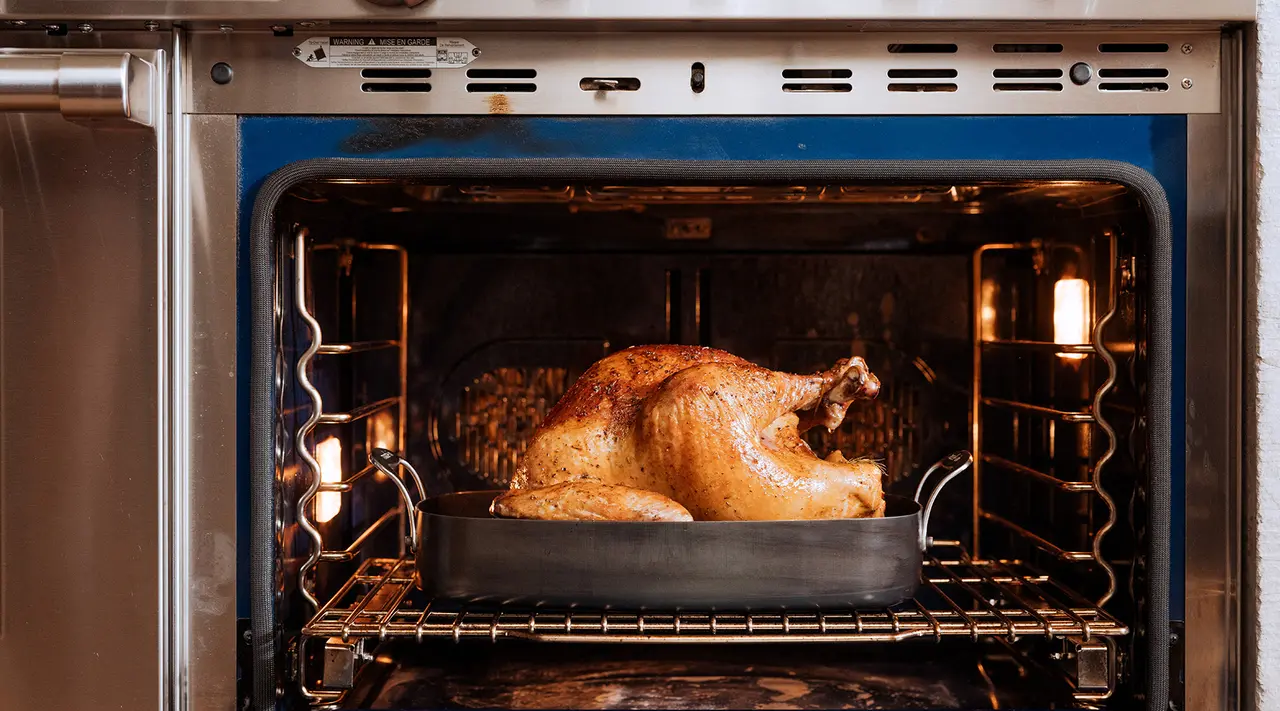Whether you’re roasting vegetables, proteins, or making a one-pan meal, a good roasting pan is an essential part of your kitchen. With so many different options on the market, it can be hard to determine what type of material or size is best. To find the right one for you, we present an in-depth guide to roasting pans so you can find one that suits your needs best.
Why Is a Roasting Pan Essential?
A Roasting Pan is a large, heavy gauge, oven-safe pan that can cook ingredients at moderate to high temperatures for longer periods with even heat distribution. They can be made of a variety of materials ranging from aluminum to Carbon Steel. Some roasting pans have handles to help you remove them from the oven, while others are simply a metal rectangle. Many also include a removable non stick rack, which is useful for cooking proteins.
What Do You Use Roasting Pans For?Roasting pans can be used for any dish where keeping heat inside is the main goal. While baking sheets and Sheet Pans are great for all over caramelization, and Bakeware or even Enameled Cast Iron Dutch Ovens can be a great alternative, roasting pans lock in more moisture, yielding tender meats.
Meals cooked in the roasting pan often include a blend of proteins and vegetables. The removable rack is especially helpful when cooking proteins, giving you two levels to work with instead of just one. It serves the dual purpose of creating crispy skin and also flavoring the bed of vegetables below.
How to Find the Best Roasting Pan For You
Now that you know what a roasting pan is and why it’s a useful addition to your kitchen, it’s time to figure out which one is the best choice for you. Here are some simple steps to follow when shopping for a roasting pan.
Step 1: Choose the Right MaterialThe most common materials for roasting pans or roasters are metals like aluminum and stainless steel, though they can also be cast iron, ceramic with a non stick coating, or Carbon Steel. Aluminum is likely the cheapest option and you can even find disposable aluminum pans at the grocery store. They’re thin and usually not built to last—they’ll get the job done but aren’t the best option because of their construction which limits conductivity.
Ceramic non stick pans are similarly short-lived. These pans, which are not actually made from ceramic, feature a silicone coating called sol-gel that creates a nonstick roasting pan. Though they come in fun colors, this type of cookware varies in quality and again, is not built to last. The non stick coating is often “self-sacrificing,” meaning that it has a finite number of uses and washes before the sol-gel runs out and begins leaching into your food.
Both Stainless Steel roasting pans and cast iron ones are good at retaining heat, but cast iron takes awhile to heat up. It’s also a heavy material that can be difficult to maneuver in and out of the oven. For this reason, we chose to make our Roasting Pan out of Carbon Steel, which heats up quickly and retains that heat thanks to its high walls. The pan itself is relatively lightweight at 5.5 lbs and the riveted handles help distribute the weight evenly. Plus, it can be used on the stovetop before being moved into the oven.
Step 2: Pick a SizeRoasting pans come in three main sizes—14”, 16”, and 18”. As always, it’s good to take into account what you roast most frequently and how many people you’re cooking for. A 14” pan is best for vegetables or meat that’s cut into chunks, like sausages. If you’re roasting poultry, this size can hold a 12 lb bird.
16” would be considered a medium-sized pan, and is usually suitable for most home cooks. It can hold a 16 lb bird but may still be too small for some turkeys. The largest size, 18” is typically the largest and most heavy-duty you can find for a home kitchen. Some people divide up its surface with aluminum foil to create smaller pans to cook multiple sides at once. It can also accommodate a 20 lb turkey.
Step 3: Determine Its UsesMany people use roasting pans to cook whole meals at once, whether that’s a medley of vegetables or a classic meat and potatoes roast. To give you the most options, purchasing a roasting pan with a removable rack is best. That gives you the option to add an extra level for roasting proteins.
Keep in mind that depending on what types of things you’re roasting, you may want a non-reactive pan. For example, if you’re roasting tomatoes to preserve their summer sweetness, you might want to look into a high-quality Stainless Steel pan rather than a Carbon Steel one. However, if you’re mainly roasting vegetables and proteins in Carbon Steel, simply any acidic elements like lemon or vinegar once you’ve removed your ingredients from the pan to prevent stripping the seasoning. Note that Carbon Steel Cookware is not dishwasher safe, so you will need to hand wash it.
Ready to Shop?
Now that you know all about roasting pans, from their materials, to sizes, to uses, shopping for one couldn’t be easier. Our Carbon Steel Roasting Pan was designed in partnership with Chef Tom Colicchio. It features a removable flat rack that makes it a versatile piece for one pan dinners and roasts alike. With its stainless steel handles, this durable but lightweight essential can move easily from stovetop to oven, making it your go-to for perfectly cooked proteins and vegetables, no matter the occasion.























